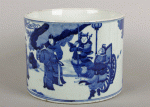Watch the embedded video here or visit our YouTube channel for this and other videos: https://www.youtube.com/watch?v=yCpYGQIZdDQ

Click here for a copy of the PDF guide to this exhibition (coming soon)
Watch the embedded video here or visit our YouTube channel for this and other videos: https://www.youtube.com/channel/UCNGKdZiEJKwsoVzcEd9ZOgQ
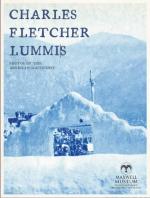
Click here for a copy of the PDF guide to this exhibition
Watch the embedded video here or visit our YouTube channel for this and other videos: https://www.youtube.com/watch?v=PKAg-02TOGs
Click here for a copy of the pdf "Become a Superhero!"
Watch the embedded video here or visit our YouTube channel for this and other videos: https://www.youtube.com/watch?v=Mi4hLor4zMY

Dr. Carmen Mosley, Curator of Human Osteology at the Maxwell Museum of Anthropology
For a copy of the PDF version of this exhibition, click here
Watch the embeded video here, or visit our Youtube channel for this and other videos: https://www.youtube.com/channel/UCNGKdZiEJKwsoVzcEd9ZOgQ

Image of George Floyd projected on the Robert E. Lee memorial
Watch the embeded video here, or visit our Youtube channel for this and other videos: https://www.youtube.com/channel/UCNGKdZiEJKwsoVzcEd9ZOgQ
Image: A defaced image of Chinese President Xi Jinping is seen in Hong Kong, October 2019. Photo credit: Sam Tsang

Museums are places where visitors encounter, explore, and engage with objects, ideas and topics that are new, familiar or challenging. And they are places where people can gather safely. In the face of the global Covid-19 (coronavirus) pandemic, the Maxwell Museum of Anthropology continues and extends our mission with an online exhibition about the current pandemic and different ways to know about it and look at it. We will be offering this information in partnership with many scholars, institutions and individuals with the goal to educate and add perspectives.
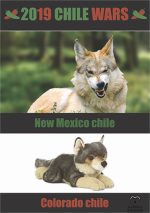
In July of 2019, following the decision by Whole Foods Market to sell green chiles grown in Pueblo Colorado, instead of chiles from New Mexico, Jared Polis, the governor of Co., set off a war of words with Michelle Lujan Grisham, governor of NM, regarding which state grows superior chiles. This in turn has been inspiring memes on social media taking up the cause.
In addition to having some fun and coming up with our own meme, the Maxwell Museum of Anthropology wanted to wade into this fracas in order to observe the anthropological themes at play (e.g. community identity, commerce, social media, etc.) as well as to highlight the research of UNM Anthropology PhD candidate Holly Brause, who has been studying the chile in southern NM and Chihuahua for the last 5 years.
In Brause’s words: Nothing unites New Mexicans quite like our love of chile. In both its fresh green and dried red forms, New Mexican chile is an integral part of New Mexican cuisine, and a powerful symbol of New Mexican heritage and identity. Despite its cultural importance, the actual New Mexico chile industry has been losing ground (in acres planted) to Mexico since the passage of NAFTA, and increasingly, to other chile producing countries around the world. To add insult to injury, now Colorado boasts that Pueblo chile is superior to New Mexican chile. To combat such an audacious claim from our northern neighbor, in 2017 the New Mexican legislature added an emergency clause to a bill that created a new license plate that proudly proclaims New Mexico to be “The Chile Capital of the World,” after rumors circulated that Colorado was planning to release their own chile plates. Even while New Mexican chile producers continue their struggle to find a way to compete in a globalized marketplace, New Mexicans passionately defend the superiority of their beloved heritage crop against competitors and detractors, both foreign and domestic.
Our meme features the endangered Mexican Wolf, or Lobo, indigenous to the region that is now New Mexico, and mascot for the University of New Mexico.
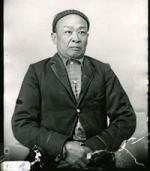
Chin Charley Hop Kee, Chloride Laundry Man (listed as Sam Kee in Hillsboro directory), 1900 - 1919
Glass plate negative, by Henry A. Schmidt
Chinese immigrants first came to New Mexico in in large numbers in the 1800s looking for jobs, particularly building railroads and mining. Because of harsh laws, including the Chinese Exclusion Act of 1882, and other discrimination, the “first wave” of immigrants were unable to create lasting communities in New Mexico. In the early 1900s, a small but permanent Chinese-American community took root in New Mexico, which later came to include refugees from the Communist takeover of mainland China, along with immigrants from Taiwan. New Mexico’s Chinese Americans are proud to be U.S. citizens, but also remember their ancient heritage.
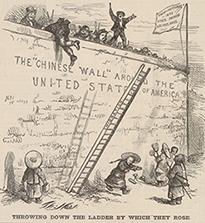
“Throwing Down the Ladder by Which They Rose,” by Thomas Nast, 1870
The exhibition, which was on view in the museum from February 2016 – January 2017, recounts the story of Chinese immigrants and Chinese American communities in New Mexico through photographs, documents and family heirlooms. The video available through the link below is an encapsulation of the exhibition, and a brief tour through this important but little known history and cultural aspect of New Mexico.
Watch the Video: COMMUNITIES IN CONTEXT: CHINESE AMERICANS OF NEW MEXICO
